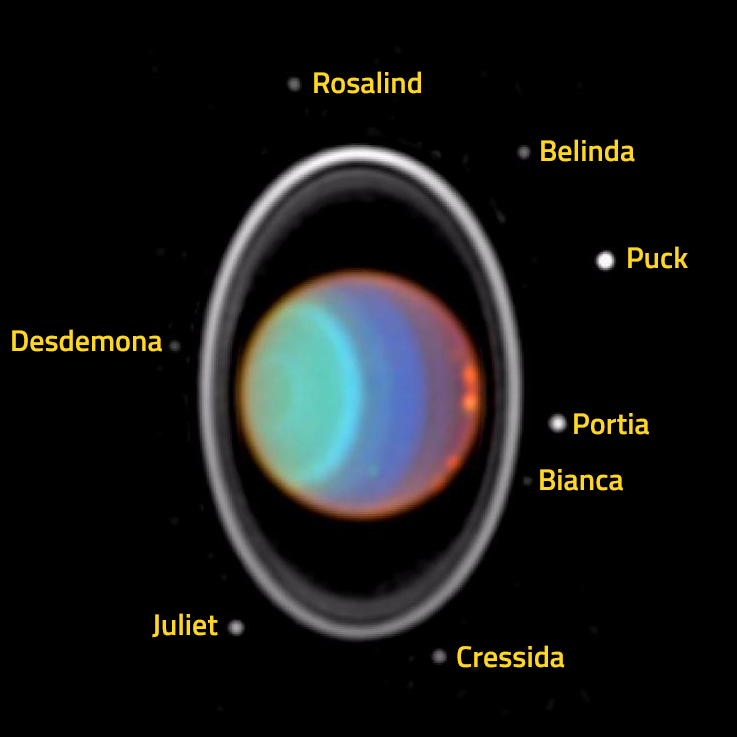Juliet, a moon of Uranus

Image of Uranus in infrared from Hubble Space Telescope. Image was taken on 28th July 1997, capturing clouds in the atmosphere of Uranus, its rings and 8 of its moons, including Juliet. Image credit: NASA/JPL/STScI
40,016 miles
66 miles
Juliet is one of the 27 moons of Uranus. It is the sixth closest moon to orbit the planet, orbiting at an average distance of 64,400 kilometres (40,000 miles). Juliet has a diameter of 106 kilometres (66 miles) and takes only 12 hours to complete an orbit of the planet.
Juliet travels around Uranus in the same direction of the planet's rotation. This is called a prograde orbit. It is also believed to have formed from materials surrounding Uranus. This makes it a regular moon; irregular moons are those that were captured by the planet. So, Juliet is classed as an inner regular prograde moon.
Juliet is a a member of a group of Uranus' moons called the Portia group. The Portia group contains nine moons (Bianca, Cressida, Desdemona, Juliet, Portia, Rosalind, Cupid, Belinda and Perdita) which have similar appearances and characteristics. These moons may have unstable orbits which leads to the possibility that, at some point in the distant future, they could collide with each other, break up into pieces, form rings or crash into Uranus.
All moons of Uranus get their names from characters in plays written by William Shakespeare or a poem written by Alexander Pope. Juliet is one of the title characters in William Shakespeare's play Romeo and Juliet, written around 1594 to 1596.
In Verona, Italy, the Capulet family have an intense rivalry with the Montague family. Juliet is a member of the Capulet family and Romeo is a member of the Montague family. During a part hosted by the Capulets, Romeo sneaks in and meets Juliet. They fall in love but they need to keep their romance secret. Not helping matters is the fact that Romeo later kills Juliet's cousin Tybalt so is banished from Verona. Meanwhile Juliet comes up with a plan to take a potion that will put her to sleep for 42 hours. This is to convince people that she has died, so that when she awakes, she can secretly escape with Romeo. Romeo though, doesn't get notified of the plan so also believes that she has died. Wanting to be with her, he buys poison, sees her body, takes the poison and dies himself. Juliet later awakes, sees that Romeo has taken the poison, so stabs herself. Nobody lives happily ever after.
Another moon of Uranus, Mab, also gets its name from a character in the play Romeo and Juliet.






